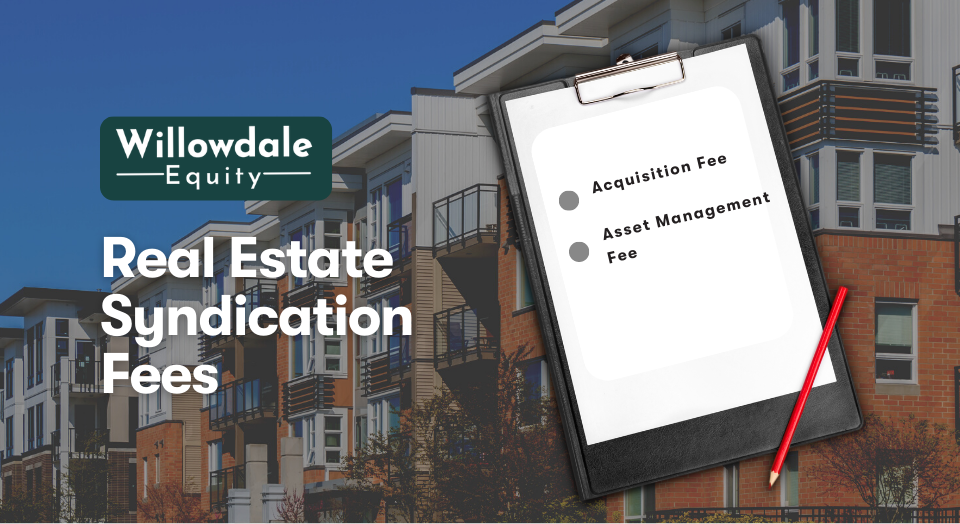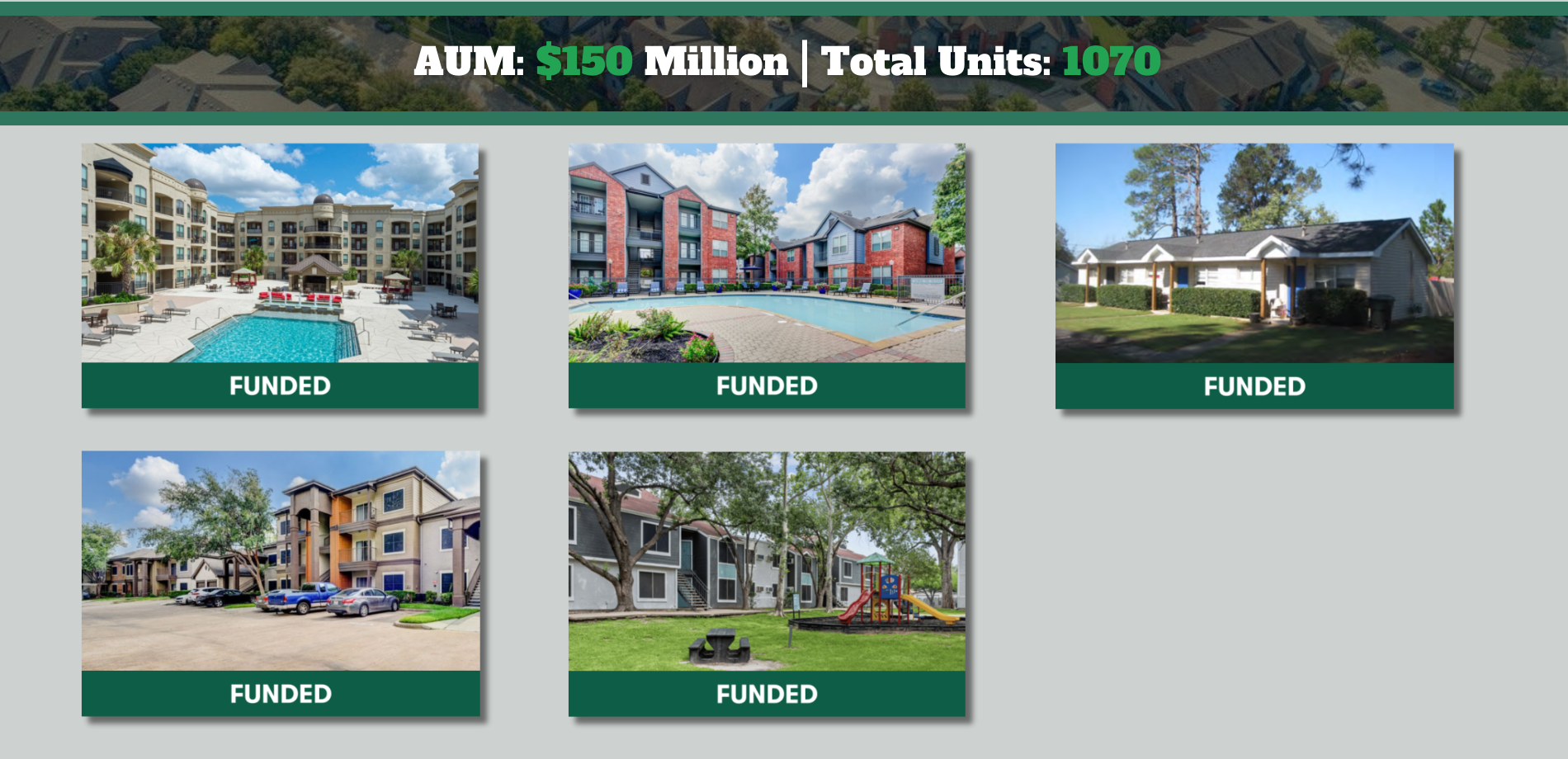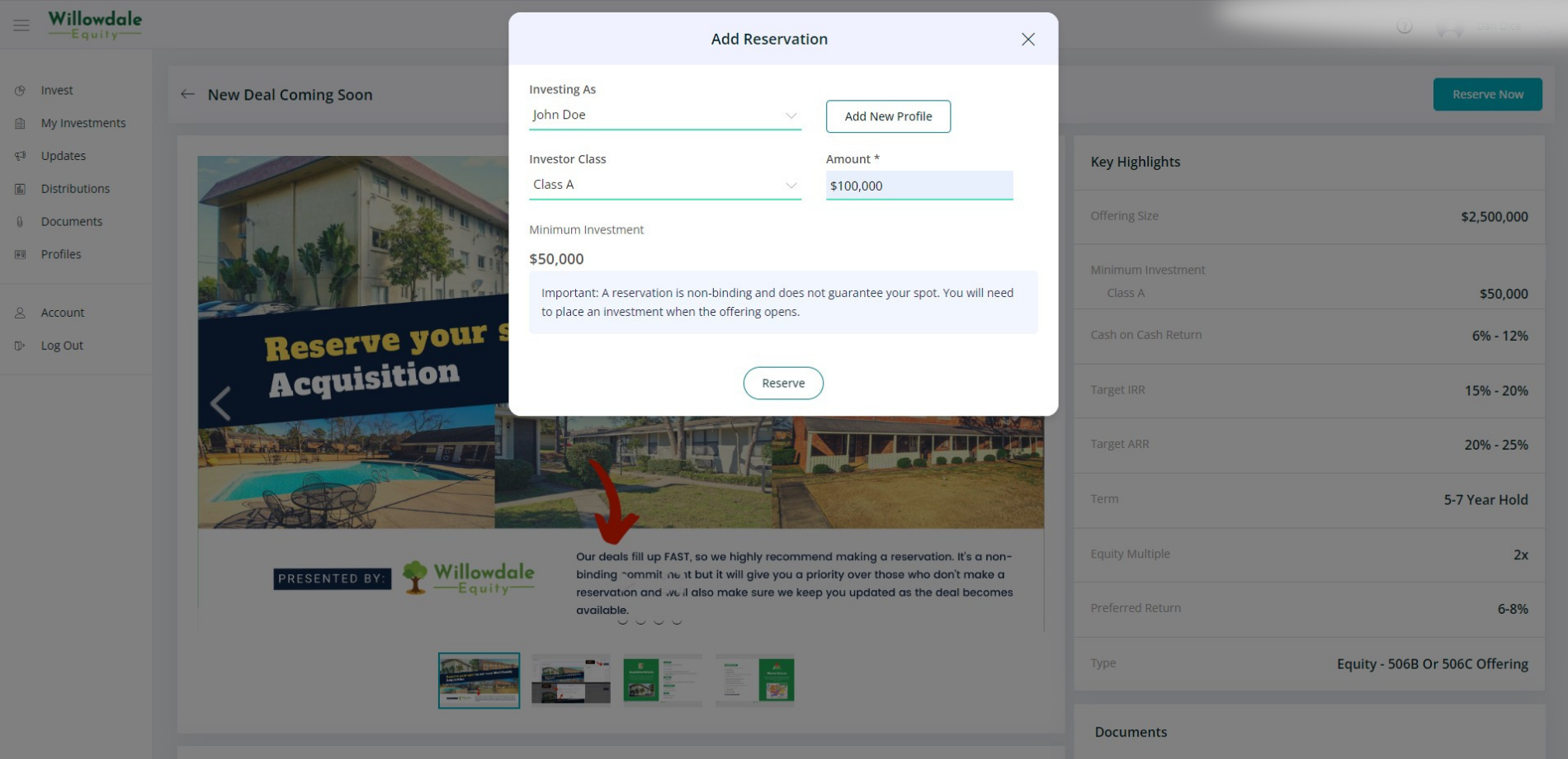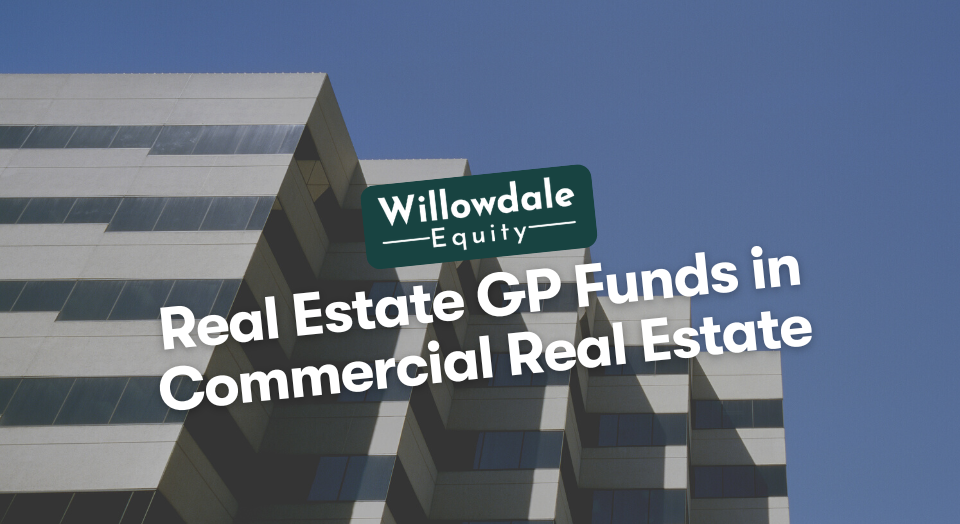
Real Estate Syndication Fees in 2024
This article is part of our passive investors guide on real estate syndications, available here.
Real estate syndications are an excellent vehicle for real estate investors to build long-term wealth. Investing in a syndicated real estate opportunity is rather straightforward and passive for investors as the general partner or sponsor undertakes all the active roles of the partnership.
But before you invest in a real estate syndication, it’s essential to understand the different real estate syndication fees and why a real estate sponsor is not taking them but instead earning them from their active role.
In this article, we’ll break down all the most common types of syndication fees, the typical fee amount, and everything to remember when analyzing these fees.
Key Takeaways
-
Understanding the standard or typical fees associated with a real estate syndication will help you make more informed investment decisions.
-
A common misconception is that the fees will drive down net return to investors, but this isn’t the case, as without a proper incentive structure to align the sponsor and the passive investors, the performance of the asset suffers, resulting in lower gains regardless of fees.
-
The PPM (Private Placement Memorandum) discloses these fees and all the risks associated with any investment.
What are Syndication Fees?
Syndication fees are payments made to the real estate sponsor/syndicator of a real estate syndication to compensate them for acquiring the asset, financing the asset, and managing the asset, for example. Some syndication fees are recurring, but most are paid out as a one-time fee.
Things to Keep In Mind with Syndication Fees
It’s essential to remember the following when it comes to understanding what purpose syndication fees serve and the misconceptions about them.
- They cover costs: Real estate syndication fees are not in place just as a means for sponsors to earn more from the deal but to cover the costs associated with managing the asset. That might include the personnel and administrative costs it takes to ensure investors have what they need and are well-informed about the property’s operations and performance.
- Return projections are net of fees: The common misconception passive investors have is that the fees will further reduce their net return projections. This means that when you’re evaluating a prospective real estate syndication opportunity, the projected return, such as the IRR, Cash-on-Cash, and Equity Multiple, are net projections after factoring in the syndication fees.
- No fees would be suspicious: These fees serve a purpose for sponsors as they help keep the lights on for their internal operations, and in many cases, a sponsor doesn’t earn any cash flow as all or the majority goes to investors. This means that it might even be alarming for some investors if the sponsor was not taking what’s standard practice, and they might feel that the sponsor may be deceptively finding other means of paying themselves.
- Performance incentive: Having fees incentivizes the sponsor to perform so they can earn more. A common misconception is that the fees will drive down net return to investors, but this isn’t the case, as without a proper real estate syndication structure or incentive structure to align the sponsor and the passive investors, the performance of the asset suffers, resulting in lower gains regardless of fees.
Next, we’ll break down the most common fees and what they’re for in a syndication.
Real Estate Syndication Fees
Understanding the standard or typical fees associated with a real estate syndication will help you make more informed investment decisions. Before you choose to invest in a real estate syndication, you’ll be able to review the PPM (Private Placement Memorandum).
This legal disclosure discloses these fees and all the risks associated with any equity investment. One fee that we didn’t cover below are property management fees because this is not an earned fee for the real estate syndication company. Instead, this is regarded as an operating expense that a property manager earns for collecting more rent.
The following are the most common fees in a real estate syndication:
- Acquisition Fee
- Asset Management Fee
- Loan Guarantor Fee
- Construction Management Fee
- Refinance Fee
- Disposition Fee
Below, we break down the typical payout for each fee, what the fee is earned for, and we’ll show an example for each.
Related Read: Am I an Accredited Investor? Accredited vs. Non-Accfeted
Acquisition Fee
The acquisition fee is a one-time fee paid out to the real estate sponsor/syndicator upon closing the deal. The fee is typically anywhere from 1% to 3% of the purchase price or value of the property. This can sometimes be as high as 5% in smaller multifamily syndication deals.
This fee compensates the real sponsor for all the months of physical and financial due diligence to locate and create the opportunity for investors. The acquisition fee gives the real estate sponsor much-needed running capital to continue to compensate their time fairly, those employed by the sponsor, cover running expenses it takes to operate and to recoup funds for the acquisition cost associated with the closing.
For example, if the purchase price was $10,000,000 and there is a 2% acquisition fee, that would be $200,000 paid on closing.
Asset Management Fee:

The asset management fee fairly compensates a sponsor/syndicator on an ongoing basis for all the time and focus that goes into managing the property daily, as well as to cover the administrative costs of bookkeeping, K-1 preparation, and ongoing communication to each passive investor. This fee ranges from 1% to 3% of the gross operating income.
For example, if the gross operating income was $500,000 for the property owned by the real estate syndication and the asset management fee was 2%, that would reflect a $10,000 fee per year.
Loan Guarantor Fee
Sometimes, a real estate syndicators will use a loan guarantor, also referred to as a “key principal”, to sign on the loan with the sponsor team. The loan guarantor is brought in to help get better financing terms and/or to increase the net worth, experience, and or liquidity of the sponsorship team. This fee is anywhere from 1% to 3% of the loan amount.
For example, if the loan is $5,000,000, and the fee is 1.5%, the loan guarantor would get $75,000 upon closing the loan.
Construction Management Fee

Renovation dollars will vary greatly depending on whether the property being acquired is a core, core-plus, or value add deal. Typical construction management fees are anywhere from 5-10% of the total renovation budget. This fee compensates for the time, focus, and management to ensure the project’s success and that everything is being executed to plan.
For example, let’s say the renovation budget was $1,000,000, and the construction management fee was 7%, which would reflect a $70,000 fee.
Refinance Fee
There s a lot of moving parts required to execute a refinance successfully. Some factors include running various proformas to evaluate the market value, preparing financials, finding the right lender, securing the best terms, and much more. A typical refinance fee could be 0.5% to 2% of the refinance loan amount.
For example, let’s say the refinance loan amount was $5,000,000, and the refinance fee was 1%, reflecting a $50,000 fee upon closing the loan.
Disposition Fee
Lastly, the disposition fee may be issued to cover the costs associated with getting the property ready to sell for top dollar. This includes marketing, travel, and time-related to ensure a smooth exit for investors. The disposition fee is typically 1% to 2% of the sales price.
For example, if the property sold for $5,000,000 and there was a 1% disposition fee, the syndicate would earn an additional $50,000 upon the exit.
Frequently Asked Questions About Syndication Fees Real Estate
The limited partners or passive investors in the partnership pay the acquisition fee in real estate. The fee will be paid out from the investment capital raised on the front end of acquiring the property.
The passive investors (Limited Partners LPs) and the real estate sponsor (General Partner GP) collectively share property ownership in a syndication.
Real Estate Syndication Fees - Conclusion
Now that you know what to look out for when it comes to real estate syndication fees, you’ll have an idea of what fee percentage is more typical based on the size of the deal. The fee structure differs from sponsor to sponsor and from deal to deal.
If you’re looking to access private multifamily syndication investment opportunities across the southeastern United States, apply to join the investors club here at Willowdale Equity today.
The Willowdale Equity Investment Club is a private group of investors that are looking to passively grow their capital and share in all the tax benefits through multifamily real estate investments.






